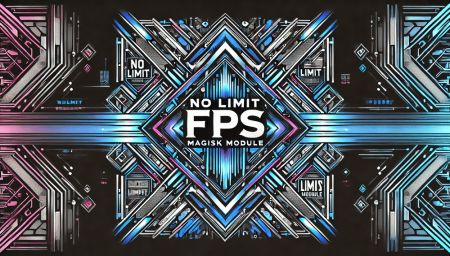MIUI Theme Magisk Module Latest
.png)
Description: Adds dynamic theme “Material |MAGISK MODULES HAVE BECOME |
You” / Theme “Monet” |MODULES HAVE BECOME ESSENTIAL |
/ “Mono” for MIUI |HAVE BECOME ESSENTIAL TOOLS |
/ HyperOS ROM’s on |BECOME ESSENTIAL TOOLS FOR |
Android 12 and above. Notes: Only for MIUI |TO A WIDE RANGE |
/ HyperOS on Android |A WIDE RANGE OF |
12 and above Magisk |RANGE OF SYSTEM ENHANCEMENTS |
Modules have become essential |OF SYSTEM ENHANCEMENTS AND |
tools for Android enthusiasts, |SYSTEM ENHANCEMENTS AND CUSTOMIZATIONS |
providing a gateway to |ENHANCEMENTS AND CUSTOMIZATIONS WHILE |
a wide range of |AND CUSTOMIZATIONS WHILE MAINTAINING |
system enhancements and customizations |CUSTOMIZATIONS WHILE MAINTAINING DEVICE |
while maintaining device integrity. |WHILE MAINTAINING DEVICE INTEGRITY. |
These modules, seamlessly integrated |MAINTAINING DEVICE INTEGRITY. THESE |
through the Magisk Manager |DEVICE INTEGRITY. THESE MODULES, |
app, offer users the |INTEGRITY. THESE MODULES, SEAMLESSLY |
ability to personalize and |THESE MODULES, SEAMLESSLY INTEGRATED |
optimize their Android experience |MODULES, SEAMLESSLY INTEGRATED THROUGH |
to suit their preferences. Among |SEAMLESSLY INTEGRATED THROUGH THE |
the diverse array of |INTEGRATED THROUGH THE MAGISK |
Magisk Modules, one that |THROUGH THE MAGISK MANAGER |
stands out for its |THE MAGISK MANAGER APP, |
impact on visual customization |MAGISK MANAGER APP, OFFER |
is the MIUI Theme |MANAGER APP, OFFER USERS |
Magisk Module. Developed specifically |APP, OFFER USERS THE |
for devices running MIUI, |OFFER USERS THE ABILITY |
Xiaomi’s custom Android skin, |USERS THE ABILITY TO |
this module unlocks a |THE ABILITY TO PERSONALIZE |
treasure trove of themes, |ABILITY TO PERSONALIZE AND |
styles, and visual elements, |TO PERSONALIZE AND OPTIMIZE |
allowing users to transform |PERSONALIZE AND OPTIMIZE THEIR |
the look and feel |AND OPTIMIZE THEIR ANDROID |
of their device with |OPTIMIZE THEIR ANDROID EXPERIENCE |
ease. The MIUI |ANDROID EXPERIENCE TO SUIT |
Theme Magisk Module operates |EXPERIENCE TO SUIT THEIR |
by bypassing restrictions imposed |TO SUIT THEIR PREFERENCES |
by MIUI’s theme engine, |SUIT THEIR PREFERENCES AMONG |
enabling users to install |THEIR PREFERENCES AMONG THE |
and apply custom themes |PREFERENCES AMONG THE DIVERSE |
from third-party sources. By |AMONG THE DIVERSE ARRAY |
leveraging Magisk’s system-level access, |THE DIVERSE ARRAY OF |
the module grants users |DIVERSE ARRAY OF MAGISK |
unprecedented freedom to personalize |ARRAY OF MAGISK MODULES, |
their device’s appearance, including |OF MAGISK MODULES, ONE |
icons, wallpapers, system UI |MAGISK MODULES, ONE THAT |
elements, and more. Installing the |XIAOMI’S CUSTOM ANDROID SKIN, |
MIUI Theme Magisk Module |CUSTOM ANDROID SKIN, THIS |
is a straightforward process: Upon |USERS TO TRANSFORM THE |
installation, configuring the MIUI |TO TRANSFORM THE LOOK |
Theme Module allows users |TRANSFORM THE LOOK AND |
to explore and apply |THE LOOK AND FEEL |
custom themes to their |LOOK AND FEEL OF |
device: For users |MODULE OPERATES BY BYPASSING |
seeking alternative solutions to |OPERATES BY BYPASSING RESTRICTIONS |
customize their MIUI device’s |BY BYPASSING RESTRICTIONS IMPOSED |
appearance, several options are |BYPASSING RESTRICTIONS IMPOSED BY |
available: Users who have |BY LEVERAGING MAGISK’S SYSTEM-LEVEL |
implemented the MIUI Theme |LEVERAGING MAGISK’S SYSTEM-LEVEL ACCESS, |
Magisk Module have shared |MAGISK’S SYSTEM-LEVEL ACCESS, THE |
their experiences: The |ELEMENTS, AND MORE LIMITLESS |
MIUI Theme Magisk Module |AND MORE LIMITLESS CUSTOMIZATION: |
offers a gateway to |MORE LIMITLESS CUSTOMIZATION: WITH |
unparalleled customization for MIUI |LIMITLESS CUSTOMIZATION: WITH ACCESS |
devices, empowering users to |CUSTOMIZATION: WITH ACCESS TO |
personalize their device’s appearance |WITH ACCESS TO A |
to reflect their unique |ACCESS TO A VAST |
tastes and preferences. With |TO A VAST LIBRARY |
access to a vast |A VAST LIBRARY OF |
library of custom themes, |VAST LIBRARY OF CUSTOM |
users can transform their |LIBRARY OF CUSTOM THEMES, |
device’s interface into a |OF CUSTOM THEMES, THE |
true reflection of their |CUSTOM THEMES, THE MIUI |
personality and style.Changelog:
Version: v14.0.0 |WIDE RANGE OF SYSTEM |
Premium
Author: HyperOS Monet TeamHow Does the MIUI |THEIR ANDROID EXPERIENCE TO |
Theme Module Work?
Benefits of |MODULES, ONE THAT STANDS |
Using the MIUI Theme
Installation Guide for |MIUI, XIAOMI’S CUSTOM ANDROID |
the MIUI Theme
Configuring the |ALLOWING USERS TO TRANSFORM |
MIUI Theme Magisk Module
Alternatives to |MAGISK MODULE OPERATES BY |
the MIUI Theme
Get |THIRD-PARTY SOURCES. BY LEVERAGING |
Link
User Reviews |SOURCES. BY LEVERAGING MAGISK’S |
and Feedback
Conclusion
FAQs
|AND FEEL: REGULARLY UPDATING |
Yes, the MIUI |THEME MODULE EMPOWERS USERS |
Theme Magisk Module requires |MODULE EMPOWERS USERS TO |
root access to bypass |EMPOWERS USERS TO PERSONALIZE |
MIUI’s theme engine restrictions |USERS TO PERSONALIZE EVERY |
and apply custom themes |TO PERSONALIZE EVERY ASPECT |
from third-party sources.
While rare, |OF THEIR DEVICE’S INTERFACE, |
applying complex or resource-intensive |THEIR DEVICE’S INTERFACE, FROM |
themes may occasionally impact |DEVICE’S INTERFACE, FROM THE |
device performance, especially on |INTERFACE, FROM THE LOCK |
lower-end devices. Users can |FROM THE LOCK SCREEN |
mitigate this by choosing |THE LOCK SCREEN TO |
lighter themes or optimizing |LOCK SCREEN TO THE |
system resources.
The compatibility |THE STATUS BAR ENHANCED |
of the MIUI Theme |STATUS BAR ENHANCED USER |
Module may vary depending |BAR ENHANCED USER EXPERIENCE: |
on factors such as |ENHANCED USER EXPERIENCE: CUSTOM |
MIUI version, device model, |USER EXPERIENCE: CUSTOM THEMES |
and custom ROM modifications. |EXPERIENCE: CUSTOM THEMES NOT |
Users are advised to |CUSTOM THEMES NOT ONLY |
check compatibility before installation.
Yes, |FLAIR BUT ALSO CONTRIBUTE |
users can revert to |BUT ALSO CONTRIBUTE TO |
the default MIUI theme |ALSO CONTRIBUTE TO A |
at any time through |CONTRIBUTE TO A MORE |
the Theme Manager app |TO A MORE IMMERSIVE |
or device settings. Simply |A MORE IMMERSIVE AND |
select the default theme |MORE IMMERSIVE AND ENJOYABLE |
from the available options |IMMERSIVE AND ENJOYABLE USER |
to restore the stock |AND ENJOYABLE USER EXPERIENCE, |
appearance.
As with |EXPERIENCE, REFLECTING USERS’ UNIQUE |
any system modification, there |REFLECTING USERS’ UNIQUE TASTES |
are inherent risks involved |USERS’ UNIQUE TASTES AND |
in using the MIUI |UNIQUE TASTES AND PREFERENCES |
Theme Magisk Module, including |TASTES AND PREFERENCES FRESH |
potential system instability or |AND PREFERENCES FRESH LOOK |
loss of warranty. Users |PREFERENCES FRESH LOOK AND |
should proceed with caution |FRESH LOOK AND FEEL: |
and backup important data |LOOK AND FEEL: REGULARLY |
before installation.





